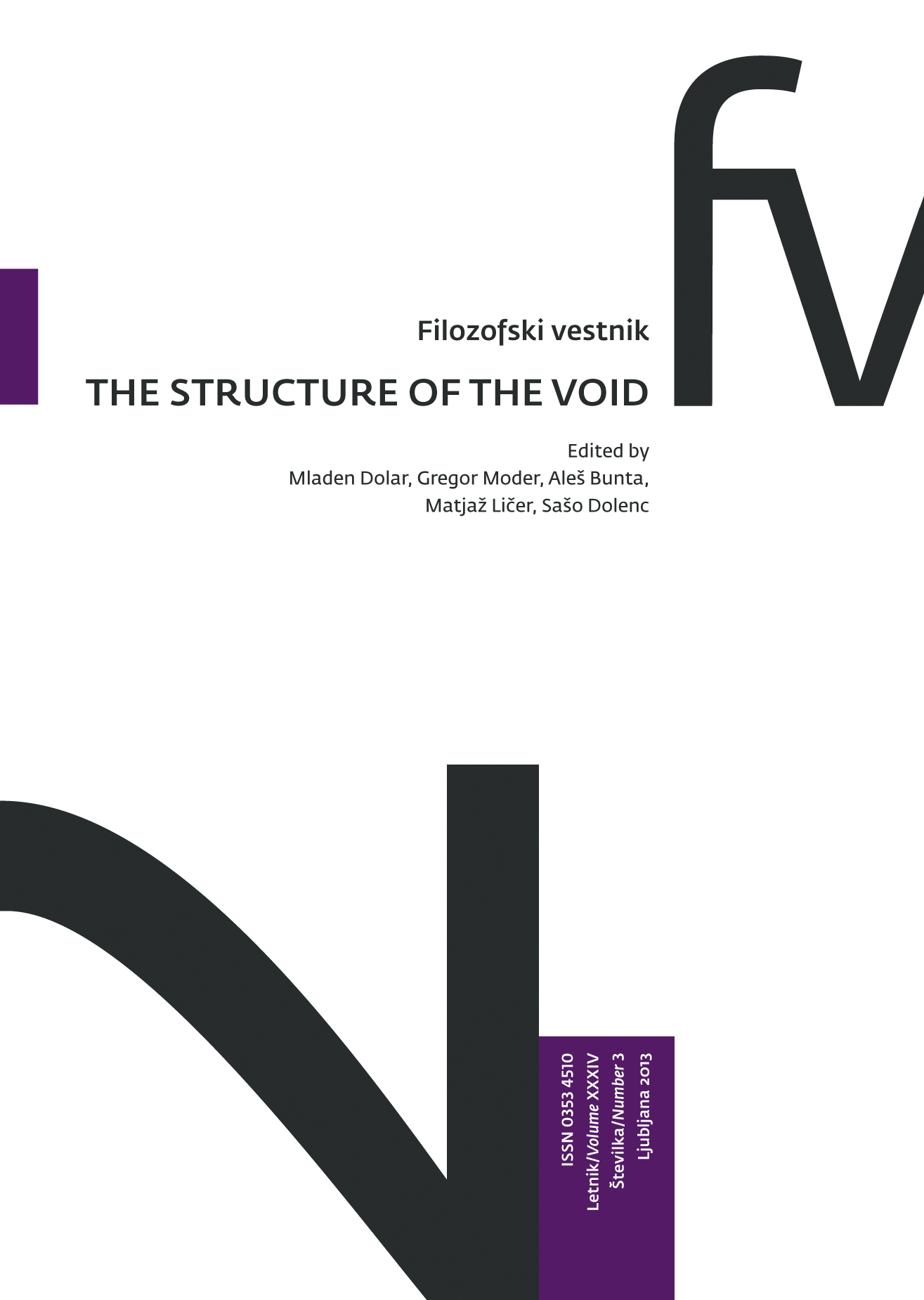Antinomy of the Void
Povzetek
The paper commences by trying to articulate what is arguably the key epistemological deadlock of the void. The first hypothesis of the paper is namely that the epistemological problem of the void is not merely encompassed within the traditional argument that the void in itself is unthinkable. Apart from being unthinkable, and in seeming contradiction to its first determination, the void is also necessarily thought of as necessary. This necessity is linked to the concept of matter. The more precise way of articulating the deadlock is namely this: although the void “in itself” is indeed unthinkable, a certain spontaneous logical necessity nonetheless exists, which in any attempt to ontologically conceptualize matter qua matter compels us to think of the void either as necessarily present, or as necessarily identical to matter itself. This is what we term the antinomy of the void. The antinomy can be at least partially resolved, though, by an approach that we term “reversed transcendentalism”. This approach consists of finding a solution to the deadlock at its abstract level by showing that the two seemingly contradictory negative determinations of the void (unthinkable as well as necessarily thought of), can be reversed into some sort of proof that a minimal pinning of the void to a thought does exist. In the remainder of the paper the focus shifts to the more concrete aspects of this antinomy, which entail elements of the philosophies of the Greek atomists, Badiou, Aristotle, and Plato.Prenosi
Podatki o prenosih še niso na voljo.
Prenosi
Objavljeno
2013-12-28
Kako citirati
Bunta, A. (2013). Antinomy of the Void. Filozofski Vestnik, 34(2). Pridobljeno od https://ojs.zrc-sazu.si/filozofski-vestnik/article/view/3259
Številka
Rubrike
The Structure of the Void
Licenca
Avtorji jamčijo, da je delo njihova avtorska stvaritev, da v njem niso kršene avtorske pravice tretjih oseb ali kake druge pravice. V primeru zahtevkov tretjih oseb se avtorji zavezujejo, da bodo varovali interese založnika ter da bodo povrnili morebitno škodo.
Podrobneje v rubriki: Prispevki





